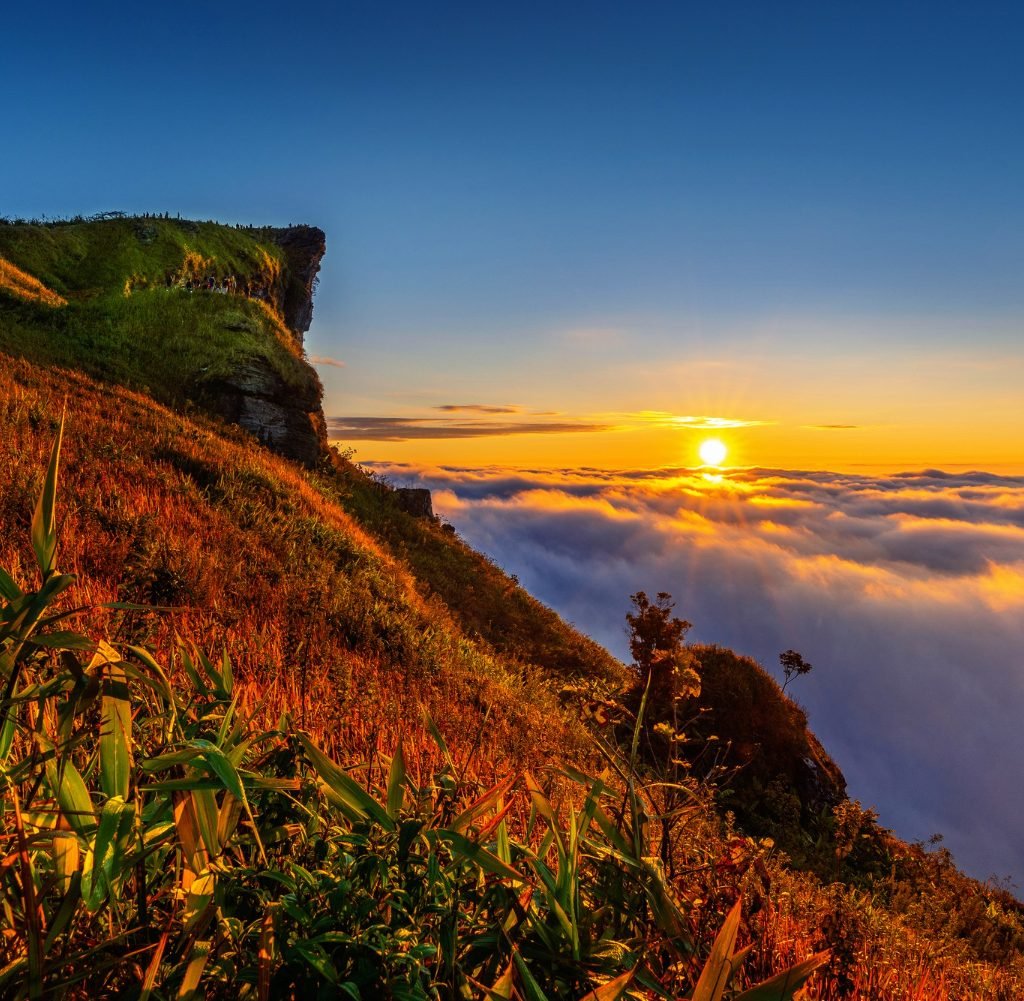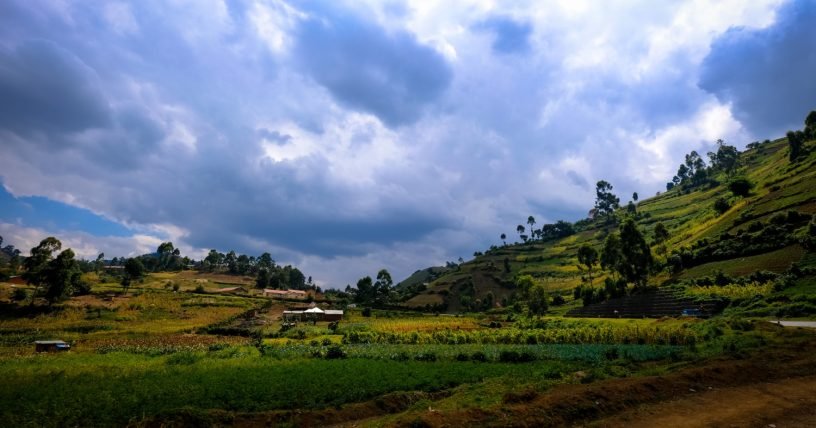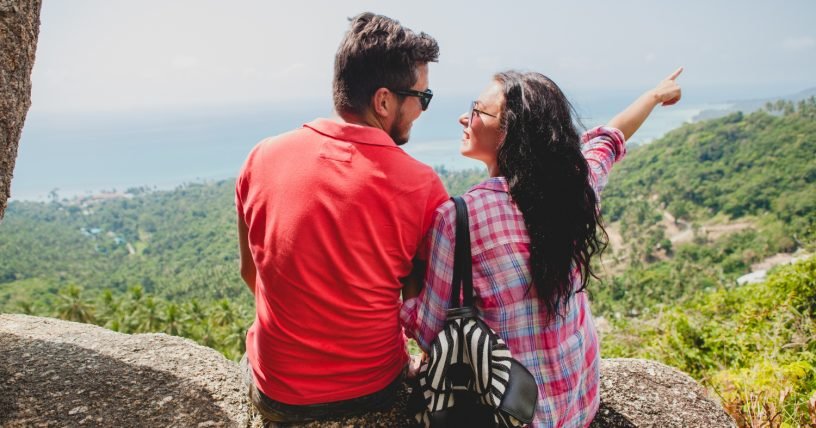Hello wanderlust friends! 😊 I’m excited to share my personal tips on experiencing the serene side of Kodaikanal. Nestled in the misty Palani Hills of Tamil Nadu, Kodaikanal is often fondly called the “Princess of Hill Stations”hhrh.in. Over several trips, I’ve discovered that timing your visit just right can make all the difference between a crowded getaway and a tranquil retreat. Let’s dive into Kodaikanal’s seasons and find out when this hill station is at its most peaceful.
Kodaikanal’s Seasonal Overview
Kodaikanal enjoys a cool, temperate climate year-round thanks to its high altitude. However, each season here has its own charm – and impact on crowds. Broadly, you can divide the year into summer (April–June), monsoon (July–September), and winter (October–March). Here’s a quick snapshot of what to expect:
- Summer (Apr–Jun): Pleasant daytime temperatures (often 20–30°C, rarely above 35°Ctravel.earth) and clear skies, but peak tourist season with lots of holidaymakers. The town buzzes with energy and events.
- Monsoon (Jul–Sep): Regular rainfall brings lush green landscapes and gushing waterfalls. It’s off-peak – tourist crowds thin out dramatically, making it ideal for solitude-seekers, albeit with some rainy-day compromisestravel.earth.
- Winter (Oct–Mar): Chilly nights and crisp, misty mornings (around 10–20°C). Shoulder season vibe – October, November and late-December see some tourists (festivals & holidays), but January–February are very quiet and romantic with mist-covered hillswandertrust.in.
In short, Kodaikanal is beautiful all year, but if like me you crave peace and quiet, you’ll want to aim for the off-peak times. Now, let’s break down each season in detail and see what they offer.
Summer (April to June) – Pleasant Weather, Busy Vibe

A panoramic view of the terraced hills and vibrant villages around Kodaikanal, showcasing clear summer skies and green valleys.
Summer in Kodaikanal is a burst of sunshine and activity. From April through June, the weather is comfortably warm during the day and cool at night – a perfect escape from the scorching plains. In fact, temperatures typically stay below 36°C even at the height of summertravel.earth. I love how the mornings are crisp and the afternoons are just right for boating on the lake or walking through pine forests. Plus, the skies are usually clear blue, offering stunning views of the valleys.
However, the great weather also brings great traffic – Kodaikanal gets crowded in summertravel.earth. May is peak holiday season in India, so expect families and tourists everywhere. I remember one May visit where the town was bustling: hotel rates were up, and popular spots like Bryant Park and Coaker’s Walk were teeming with visitors. On the upside, the lively atmosphere means lots of local events and cultural festivals. Don’t miss the annual May summer festival featuring a gorgeous flower show at Bryant Park and even boat races on the laketravel.earth. The vibrant energy is infectious, but if you’re seeking peace, you’ll have to work around the crowds.
Highlights of a Kodai Summer:
- Gorgeous Weather: Daytime temperatures ~20–30°C, making it ideal for trekking and sightseeing under clear skiestravel.earth. Evenings are breezy and pleasant.
- Festivals & Events: The Summer Festival in May is a major draw – colorful flower shows, boat pageants, and cultural performances add charm to the seasontravel.earth.
- Peak Tourist Rush: Summer is peak season, meaning bustling streets and heavy tourist footfall. Hotels fill up fast (book early!), and there’s a lively buzz everywhere.
- Travel Tip: If you must visit in summer but want some quiet, try coming in early April or late June. The crowds are slightly thinner at the very start or tail of the season. Also, opt for weekdays instead of weekends to avoid the local rush.
For many, summer’s lively vibe is part of Kodaikanal’s appeal. I’ve enjoyed summer treks to Dolphin’s Nose and picnics by the lake, but I’ll admit – I often found myself daydreaming about a quieter Kodai. If you’re like me, read on, because the monsoon might just be your favorite time to visit.
Monsoon (July to September) – Lush Greenery and Tranquility
Emerald-green hills and misty forests come alive during Kodaikanal’s monsoon, creating a tranquil paradise for those who don’t mind the rain.
Ah, monsoon in Kodaikanal – now this is my personal happy place! 🌧️ During July, August, and September, the South-West monsoon sweeps over the Western Ghats, and Kodaikanal transforms into a misty wonderland. The hills don a vibrant green cloak as the forests and meadows soak up the rain. Waterfalls that were mere trickles in summer (like Fairy Falls or Bear Shola Falls) roar to life, which is an awe-inspiring sighttravel.earth. I once hiked to a waterfall in August and was rewarded with a gushing cascade and a cool spray on my face – with absolutely no one else around!
Monsoon is officially off-season in Kodaikanaltravel.earth, and that’s great news for peace-seekers. The usual tourist crowds are gone; you’ll have quiet walking trails and viewpoints practically to yourself. I’ve enjoyed serene walks around a foggy Kodaikanal Lake in the rain, bumping into more local farmers and friendly stray dogs than tourists. Hotels and resorts often drop their prices in this period too (rainy-season discounts are commonwandertrust.in), so it’s budget-friendly for longer stays. The whole vibe is slow, calm, and soul-refreshing.
What I love about Monsoon in Kodai:
- Nature at Its Best: The “valley’s natural essence truly comes alive” with lush flora – every shade of green intensifiestravel.earth. It’s a paradise for nature photographers and anyone who finds beauty in mist-laden landscapes.
- Peace & Quiet: With fewer tourists around, Kodaikanal’s usual touristic buzz fades awaytravel.earth. It feels like a private retreat. I cherish sitting by my cottage window with a hot cup of tea, just listening to the rain on the rooftop – pure bliss.
- Cozy Vibes: Monsoon is perfect for cozying up. Think reading a book by the fireplace, enjoying hot pakoras (fried snacks) and chai, or taking a lazy nap to the sound of rainfall. It’s slow travel at its finest.
- Travel Considerations: Of course, the rains do mean you need to be a bit flexible. Pack a good raincoat and quick-dry clothing, and plan for occasional indoor days. Roads can get slippery and there are sometimes minor landslides, so drive cautiously in the ghats and keep an eye on weather forecastswandertrust.in. Personally, I don’t plan very long hikes during heavy rain – instead I opt for short walks or just enjoy the scenery from a viewpoint.
If you enjoy solitude and don’t mind a little drizzle, monsoon can honestly be the best time to visit Kodaikanal for a peaceful experiencetravel.earth. The combination of fresh earthy smell, the chorus of birds and frogs, and the sheer quiet of an uncrowded hill station is magical. Just remember to embrace the “wet solitude” of the season – as I like to say, don’t fight the rain, dance in it! 😉
Winter (October to March) – Misty Mornings and Cozy Retreats
Misty winter morning in Kodaikanal: The hills are often wrapped in cloud-kissed fog, creating a fairytale ambiance.
Winter in Kodaikanal is a tale of two moods: the tail end of the year brings festive cheer and some crowd, while the early months of the new year are incredibly calm and romantic. From October through March, temperatures drop and you get to experience Kodaikanal’s mist and chill. Imagine waking up to cloud-kissed summits and airy lakes, then warming your hands around a cup of hot cocoa by a bonfire in the evening – that pretty much sums up a perfect Kodai winter daytravel.earth! Daytime highs hover around a comfortable 18–20°Ctravel.earth, but nights can get quite cold (sometimes below 10°C in Dec–Jan), so do pack those sweaters.
During October and November, the monsoon’s greenery still lingers and the weather is cool. There might be occasional showers (especially if the North-East monsoon hits Tamil Nadu in Oct-Nov), but generally this period is great for outdoor activities. December brings holiday travelers – families during school break and people celebrating Christmas/New Year. The town has a lovely festive vibe with decorations, and some hotels (and homemade chocolate shops!) host Christmas specials. It’s not overwhelmingly crowded compared to May, but it’s definitely livelier than monsoon. Pongal (mid-January) is another brief bump in local tourism – a wonderful time to see local culture, with colorful Pongal pots and traditional dances if you’re interestedtravel.earth.
My absolute favorite time, though, is late January through February. This is when Kodaikanal truly slows down. The crowds from New Year’s and Pongal are gone, the weather remains crisp and cool, and the landscape often sits under a dreamy mist in the mornings. It’s quiet. In fact, January and February are ideal for a quieter, misty, and romantic atmosphere – a cozy retreat perfect for couples or anyone seeking solitudewandertrust.in. I’ve done trips in February where I could walk Coaker’s Walk at sunrise with literally no one else around, just me and the valley views. Those moments are unforgettable.
Winter Season Highlights:
- Crisp & Clear Weather: Many winter days have clear blue skies (great for photography). The air is extra fresh. By night, you get stunning views of stars – winter often means crystal-clear night skies for stargazingwandertrust.in.
- Misty Magic: At the same time, early mornings often bring thick fog that makes the forests look straight out of a fairytale. Kodaikanal transforms into a magical, mist-laden wonderland in wintertravel.earth. A walk around the lake or in Vattakanal village enveloped in cloud is so atmospheric.
- Mixed Crowd Levels: October–December: moderate crowds (especially late Dec) due to holidays. Jan–Feb: very low crowds (peaceful and ideal for honeymoons)wandertrust.in. By March, tourists start trickling back for summer vacations, but early March is still relatively calm.
- Outdoor Fun: Winter is a fantastic time for trekking – trails like Perumal Peak or to villages like Poombarai are open and safe (no rain)travel.earth. The cool air makes hikes enjoyable. It’s also a good season for bird-watching and long bicycle rides around town. Just remember to wear layers; mornings can be nippy!
In summary, winter offers the best of both worlds: go in the early part (Oct/Nov) or late part (Jan/Feb) for peace and natural beauty, or in December if you prefer a blend of social festivities and quiet hillside moments. Whenever you choose, you’ll see Kodaikanal’s landscapes either draped in mist or glittering under clear sunshine – both are gorgeous in their own way.
Best Months for a Peaceful Experience
Now to answer the big question: “When is the best time to visit Kodaikanal for peace and quiet?” Based on my experiences (and a bit of insider info), here are the top picks for a tranquil Kodai trip:
- 🥇 January & February: Winner for calm vibes. These months fall right after the busy holiday season, so tourist numbers are at their lowestwandertrust.in. The weather is cool and comfortable, with misty mornings creating a romantic ambiance. Whether you’re a honeymooner or a solitude-seeker, Jan–Feb offer serene landscapes with minimal crowdswandertrust.in. I love visiting around late January – the town feels like it’s exhaling after the New Year rush. Plus, hotel rates tend to be reasonable and you might snag a bonfire night under the stars without any disturbance.
- 🥈 July & August (Monsoon Peak): If you don’t mind rains, monsoon months are incredibly peaceful. Crowd levels in July–Aug are among the lowest of the yearwandertrust.in, and the natural beauty is at its peak with waterfalls and green hills. It’s like having a hill station all to yourself! Bring a rain jacket and an open mind, and you’ll find this time extremely rewarding for a quiet retreat. I’ve had some of my most introspective travel moments in Kodai during monsoons – it’s just you, the mist, and the sound of raindrops.
- 🥉 Early June or Late September: These are shoulder periods right at the edges of high season. Early June (just as summer holidays end) and late September (monsoon ending) can be good compromise times. The weather is transitioning – you might catch the last of summer’s clear days in June or the first post-monsoon clear skies in late September – and crowds are relatively thin as it’s just before the next surge. I once visited in the first week of June: the summer rush was tapering off, some monsoon showers started, and it was pleasantly quiet on weekdays. September visits have gifted me with lush greenery without the heavy rains, which was fantastic.
Months I’d Avoid for Peace: May and December are the busiest – I avoid late May (peak summer fest and school vacation) and the Christmas-New Year week if I truly want solitude, because those times see a spike in holidaymakerswandertrust.in. Pongal in mid-January is short but busy for a few days too. Not that you can’t find peace then, but you’ll have to venture farther from town center and book well ahead.
In essence, if a peaceful hill station experience is what you’re after, aim for the “in-between” months and off-season windows. You’ll enjoy Kodaikanal’s beauty with a fraction of the tourists around.
Tips for a Quiet, Relaxing Kodai Trip
To wrap up, here are some personal tips I’ve gathered to ensure your Kodaikanal trip is as peaceful and refreshing as possible:
- Choose Mid-Week Travel: Whenever possible, visit on weekdays. Many tourists from nearby cities come over the weekend, so arriving Monday–Thursday means quieter trails and viewpoints. I often plan my itinerary to include a weekend in the middle for long treks (since I’ll be away from town crowds then), but use weekdays to see popular spots with fewer people around.
- Stay Outside the Main Town: Kodaikanal’s town center (around the lake) is convenient but can be noisy with traffic and markets. For a tranquil stay, opt for accommodations a little away from the hustle – perhaps in the outskirts or nearby villages in the hills. During one trip, I stayed in a cottage a few kilometers from town and waking up to just birds chirping was the best decision ever.
- Unwind at a Peaceful Resort: Along the same lines, picking the right hotel/resort sets the tone. I can personally recommend Hasvika Hilltop Resort for a serene getaway. It’s perched in the quiet hillside of Thandikudi (away from the touristy chaos), and it truly lives up to its promise of being “an unforgettable retreat from the chaos of urban life”hhrh.in. Imagine sweeping mountain views, fresh hill air, and zero honking sounds – that’s Hasvika! I spent an evening there sitting in their garden, watching the clouds roll over the valley, and I felt all my city stress melt away. Whether you do a yoga session in the morning or stargaze at night, this resort is a perfect place to unwind on a peaceful trip.
- Embrace Slow Travel: Don’t overpack your schedule. The beauty of Kodaikanal reveals itself when you slow down. Take that extra hour in the morning to sip your tea with a view, or spend an afternoon reading under a tree at Bryant Park. Less is more here. You’ll come back feeling recharged if you give yourself time to simply be in the hills.
- Pack for the Season: A practical tip – pack layers and rain gear as needed. Umbrellas or raincoats in monsoon (and an adventurous spirit to enjoy the rain!), warm jackets for winter nights, good walking shoes for impromptu hikes, and perhaps a thermos for carrying hot drinks on those misty morning walks.
- Respect Local Rhythm: Kodaikanal is peaceful also because life here moves at a slower, more mindful pace. Try to sync with it. Visit the local vegetable market early morning, chat with a tea stall owner, or watch farmers working in the distance. These little moments connect you deeper with the place. And always remember to leave no trace – keep the environment clean so that the hill station stays pristine for everyone.
Finally, a note on safety: Kodaikanal is quite safe for travelers, but if you’re venturing out in off-peak times, some remote areas might not have cell signal or many people around. Always let someone (perhaps your hotel front desk) know if you head out on a long trek alone, especially in monsoon. Carrying a basic first aid and flashlight is part of my routine too. Not to scare you – in fact, the locals are very helpful and kind – but a little preparedness adds to peace of mind.
Conclusion
Visiting Kodaikanal for a peaceful hill station experience is absolutely possible and oh-so-rewarding if you plan it right. To recap, timing is key: try the quiet winter months or the lush monsoon season for the fewest crowds, and you’ll see an entirely different, tranquil side of this popular destination. I’ve shared my favorite moments – from walking through misty, deserted woods in February to enjoying the symphony of rain in August – and I hope they inspire you to find your own quiet corner in Kodaikanal.
Remember, the goal is not just to visit Kodaikanal, but to experience it – to breathe in the eucalyptus-tinged air, listen to nature’s sounds, and slow your pace to match the rhythmic clouds. Whether you’re journaling by the lake or sharing stories by a bonfire at Hasvika Hilltop Resort (truly a gem for peace-lovers), you’ll create memories that rejuvenate you long after you leave.
So, when planning your trip, think about what you want: if it’s peace, go when Kodai is sleepy and calm. Pack your bags accordingly, and get ready to enjoy the Princess of Hill Stations at her serene best. Happy travels, and may you find the peaceful retreat you seek in Kodaikanal! 🌄🧡
Sources:
- Personal travel experiences and observations from multiple visits to Kodaikanal (2018–2024).
- Kodaikanal climate and season insightsmakemytrip.comtravel.earth.
- Tourist crowd patterns and tips for off-peak travelwandertrust.inwandertrust.in.
- Descriptions of Kodaikanal in different seasons (summer festivities, winter ambiance, monsoon tranquility)travel.earthtravel.earthtravel.earth.
- Peaceful accommodation recommendation based on Hasvika Hilltop Resort’s tranquil settinghhrh.inhhrh.in.




